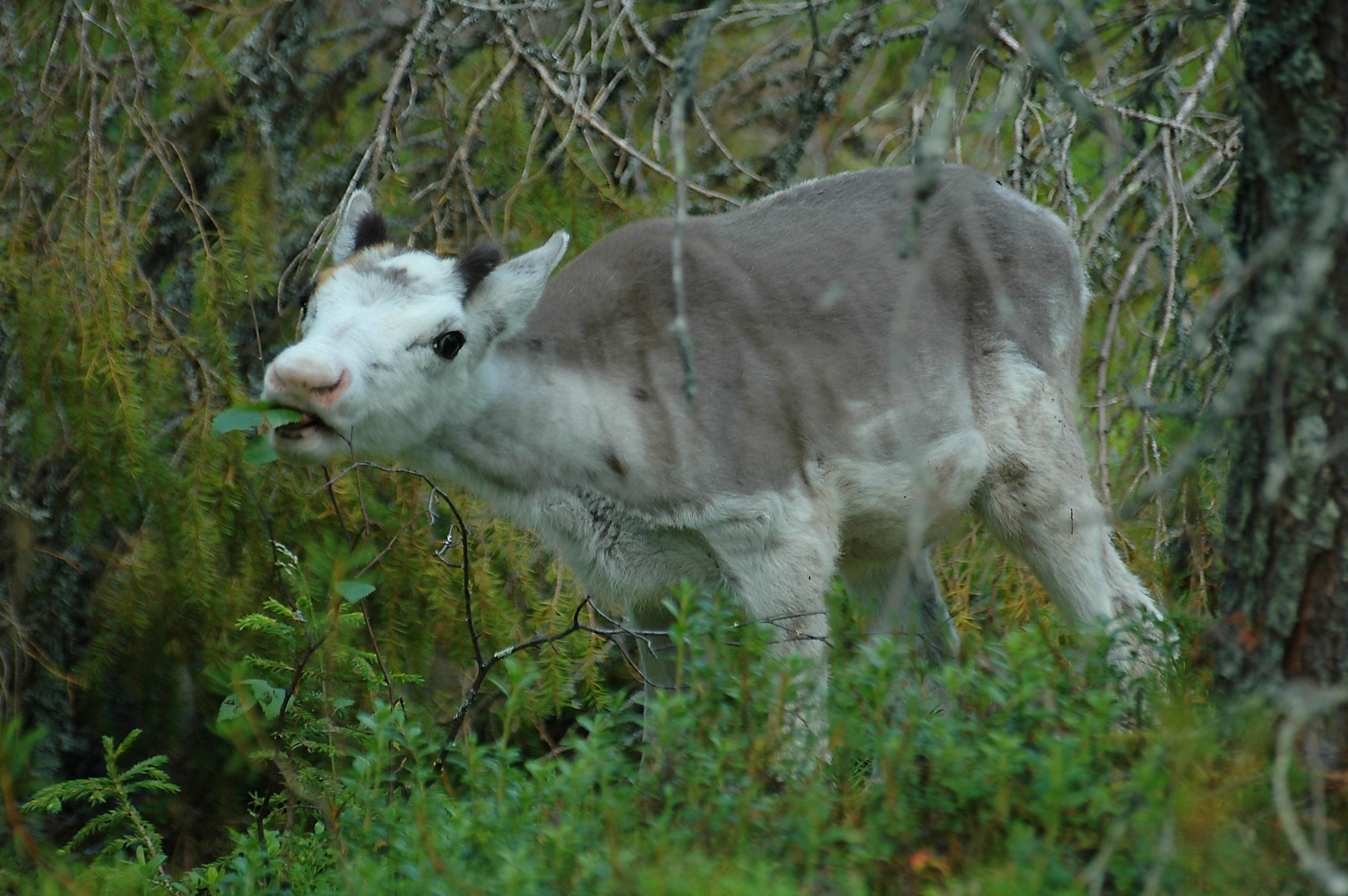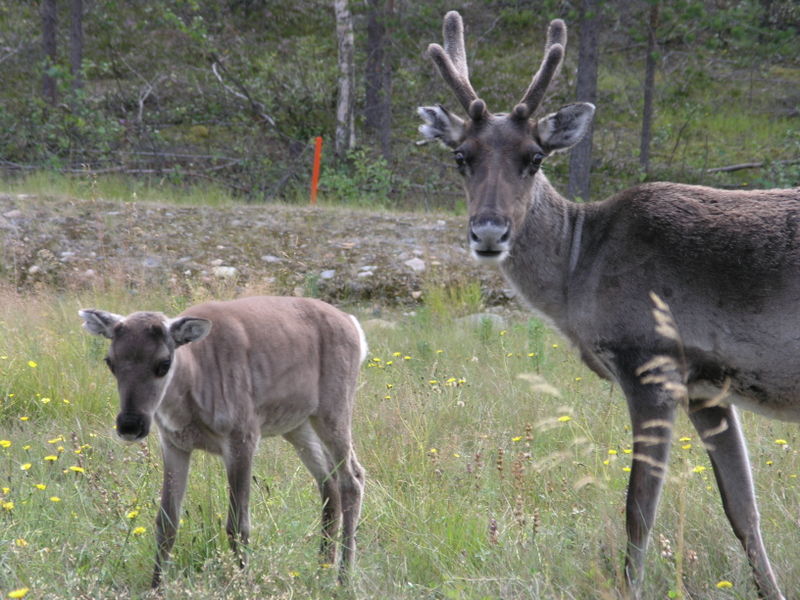Life History and Reproduction
Reindeer sexually reproduce once a year during the rut
(breeding season) which usually occurs around October.
During this time, males compete with one another for access to females by
bellowing and clashing their
antlers together, which can lead to
injury. To attract and mate with as many females as they can, they chase after them and thrash their antlers in the bushes to
draw attention.5
Males usually control 5-15 females, and during the rut, they stop feeding
and lose much weight. They mate
through polygamy (more than one mate throughout their lifetime).
Females (cows) are able to be impregnated at 16 months old, but it
usually occurs around 28 months.
Good nutrition is a requirement to give birth each year; without it the female
cannot support the pregnancy.
Calves can weigh 3-12 kg, and are born in May or June, which is about 228 days
after impregnation. Thus, the average gestation period is 7.60 months.17
as they can, they chase after them and thrash their antlers in the bushes to
draw attention.5
Males usually control 5-15 females, and during the rut, they stop feeding
and lose much weight. They mate
through polygamy (more than one mate throughout their lifetime).
Females (cows) are able to be impregnated at 16 months old, but it
usually occurs around 28 months.
Good nutrition is a requirement to give birth each year; without it the female
cannot support the pregnancy.
Calves can weigh 3-12 kg, and are born in May or June, which is about 228 days
after impregnation. Thus, the average gestation period is 7.60 months.17
The calves are able to suckle from the mother immediately, but this only lasts for about a month and a half, and then they begin to forage. After 45 days they rely exclusively upon foraging for their food. For 6 months the calves follow their mothers wherever they go, and then they are weaned. Within an hour after their birth they are able to stand and walk, and can even outrun a human at one day old! 17
_-_young_-_body.jpg)
